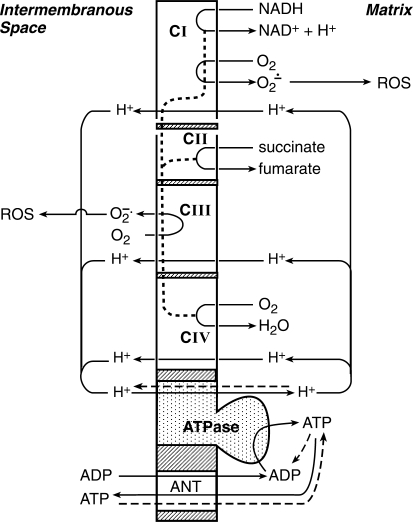Fig. 1.
Schematic diagram of electron and proton flow along the respiratory chain complexes (CI-CIV) of the inner mitochondrial membrane. Electrons (dotted line) from NADH (CI) and FADH2 (CII) flow along the respiratory chain to O2 (CIV), which is linked to a proton flux from the mitochondrial matrix to the intermembranous space. Passage of protons back to the matrix through the ATPase complex drives ATP synthesis. ATP passes through the inner and outer mitochondrial membranes via the adenine nucleotide translocator (ANT) into cytosol. Under normal conditions, 1–2% of electron flow through the respiratory chain reduces O2 to superoxide anion radical (O2·−) at complexes I and III. Hypoxia diverts more of the electron flow to O2·− production, with O2·−'s generated at complex III a major source of mitochondria-derived reactive oxygen species (ROS) in cytosol. The dashed lines show the reversal of membrane transport for protons and ATP in O2 deficiency. ATP generated by cytosolic glycolysis is carried into mitochondria, where it is hydrolyzed by ATPase. This supplies energy for the extrusion of protons from the mitochondrial matrix to the intermembranous space to maintain the mitochondrial membrane potential. [Adapted from Solaini et al. (317).]

